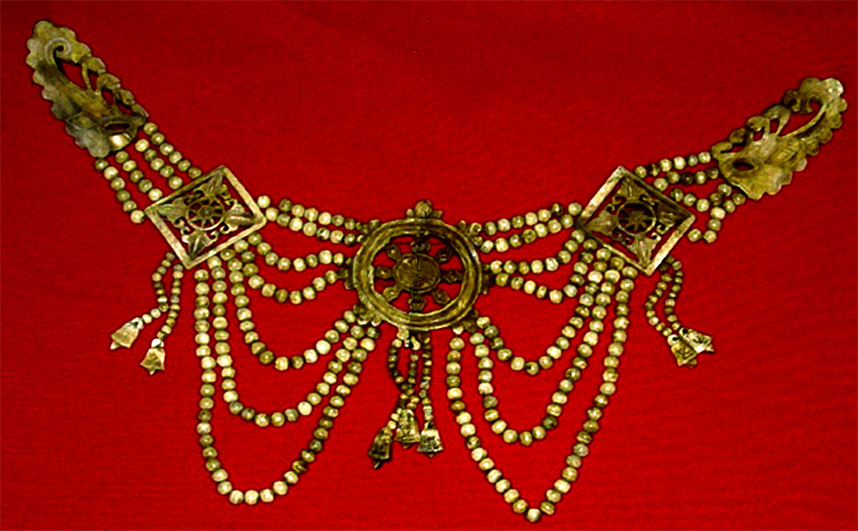
Ru rGyan
neck piece
This neck piece is all that remains of an old set from Tibet and is part of an assemblage of such pieces collected by Ngak’chang Rinpoche and Khandro Déchen in order to have them reproduced in India. According to the Aro gTér tradition, this tabard style—in a larger more complex form—is the female equivalent to the crossed chest piece worn by yogis, although both are worn by both yogis and yoginis.
Khandro Déchen comments:
To wear the ru rGyan is to step into the dimension of vision. The ankle ornaments; the wrist, upper arm, and chest ornaments; the crown and aprons are symbols of the six levels of Vajrayana. When they are worn as one’s sole clothing it creates a visceral impact which takes the wearer into a state of intense presence. The reminder of death provided by the bone is a powerful reminder that the allowance of death is the allowance of authentic life. The ru rGyan are thus an ecstatic statement of conviction.
